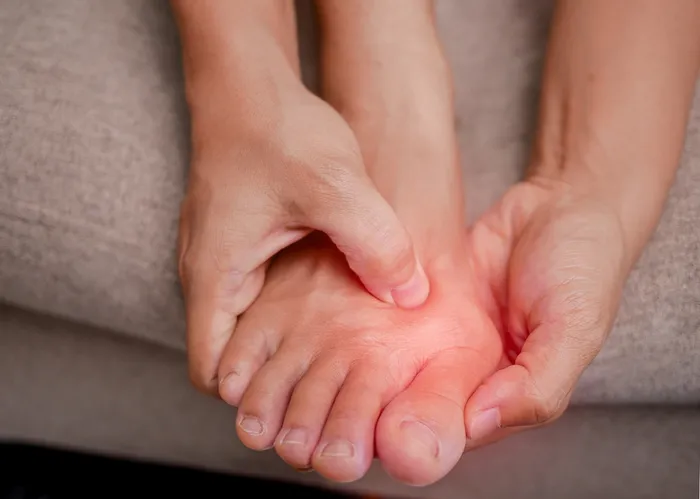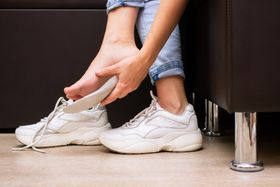Cuboid Syndrome Sufferers: How Orthotics Can Help Your Feet
Updated January 25, 2024.

Cuboid syndrome got you down? Learn how orthotics can help realign your foot bones, provide support, and improve your overall comfort.
Cuboid syndrome is a medical condition where the cuboid bone, one of several small bones in the foot, moves out of alignment or shifts from its normal position, causing pain on the outer (lateral) side of the foot. This condition often results from sprains of the cuboid ligament, leading to ligament laxity and worsening of the syndrome.
Common symptoms include foot pain, difficulty standing or walking, and aggravation when weight is placed on the affected foot. Athletes, dancers, and individuals engaged in high-impact sports are particularly susceptible to cuboid syndrome. Ballet dancers are at especially high risk for developing this condition and are reported to make up 17% of reported foot and ankle injuries in this population group.
Risk factors for developing this condition include ligament laxity, obesity, repetitive high impacts on the joint, running on uneven surfaces, and flat feet. Recovery time depends on the severity of the condition and the duration of the injury. Long-term symptoms may include persistent pain, general foot weakness, and tenderness in the outer aspect of the foot.
» Looking to avoid cuboid syndrome? Find insoles for flat feet pain
Causes of Cuboid Syndrome
Diagnosing the cause of cuboid syndrome can be challenging due to the complexity of the foot. Common causes include repetitive stress from high-impact activities, injury to the cuboid-calcaneal joint, sprains or injuries of the ligaments between the tarsal bones, and biomechanical issues such as flat feet or excessive pronation. Ill-fitting shoes, participation in sports with rapid side-to-side movements, and wearing shoes with flexible soles can also contribute to the development of cuboid syndrome.
Shoes with flexible soles aren't recommended for those with cuboid syndrome.
Symptoms of Cuboid Syndrome
Signs and symptoms of cuboid syndrome include:
Lateral Foot Pain: Pain experienced along the outer edge of the foot, which may spread to the ankle joint and forefoot.
Pain Worsening with Activity: Pain that intensifies with repetitive loading of the affected foot (e.g., walking, jumping, or changing direction) and eases with rest.
Difficulty Walking: Pain and discomfort may lead to limping in an attempt to reduce weight on the affected foot.
Swelling and Tenderness: The area may become red, warm, or swollen due to sprained ligaments surrounding the cuboid bone and feel tender when touched.
Pain Increasing While Standing on your Toes: Pain intensifies with loading of the cuboid bone and surrounding ligaments.
How to Treat Cuboid Syndrome with Orthotics
Orthotics for cuboid syndrome have proven effective in providing pain relief due to the support and cushioning they offer to the subluxed cuboid bone. They improve shock absorption during high-impact activities, accommodate various joint and muscle conditions, and enhance gait and overall comfort.
Custom orthotics are tailored to the shape and needs of your foot, redistributing body weight evenly across the foot and alleviating high-stress areas, and preventing excessive motion.
Upstep's custom orthotics are made from high-grade materials using custom casts of your feet. They come with a 120-day money-back guarantee and free shipping. You can use Upstep’s custom orthotics to limit excess supination of the foot, which would only worsen subluxation. Upstep offers a variety of custom options for different foot conditions and sports.
Conquer Cuboid Syndrome
Cuboid syndrome responds well to conservative management strategies like rest, ice application, and foot elevation. However, custom orthotics should be considered for effective long-term management and prevention of the condition. The support, cushioning, and stability provided by custom orthotics are crucial in the treatment of cuboid syndrome. Custom orthotics tailored to your foot shape are an affordable and effective way to significantly improve symptoms caused by cuboid syndrome.








